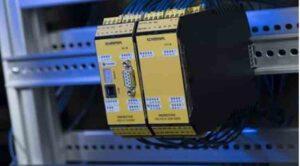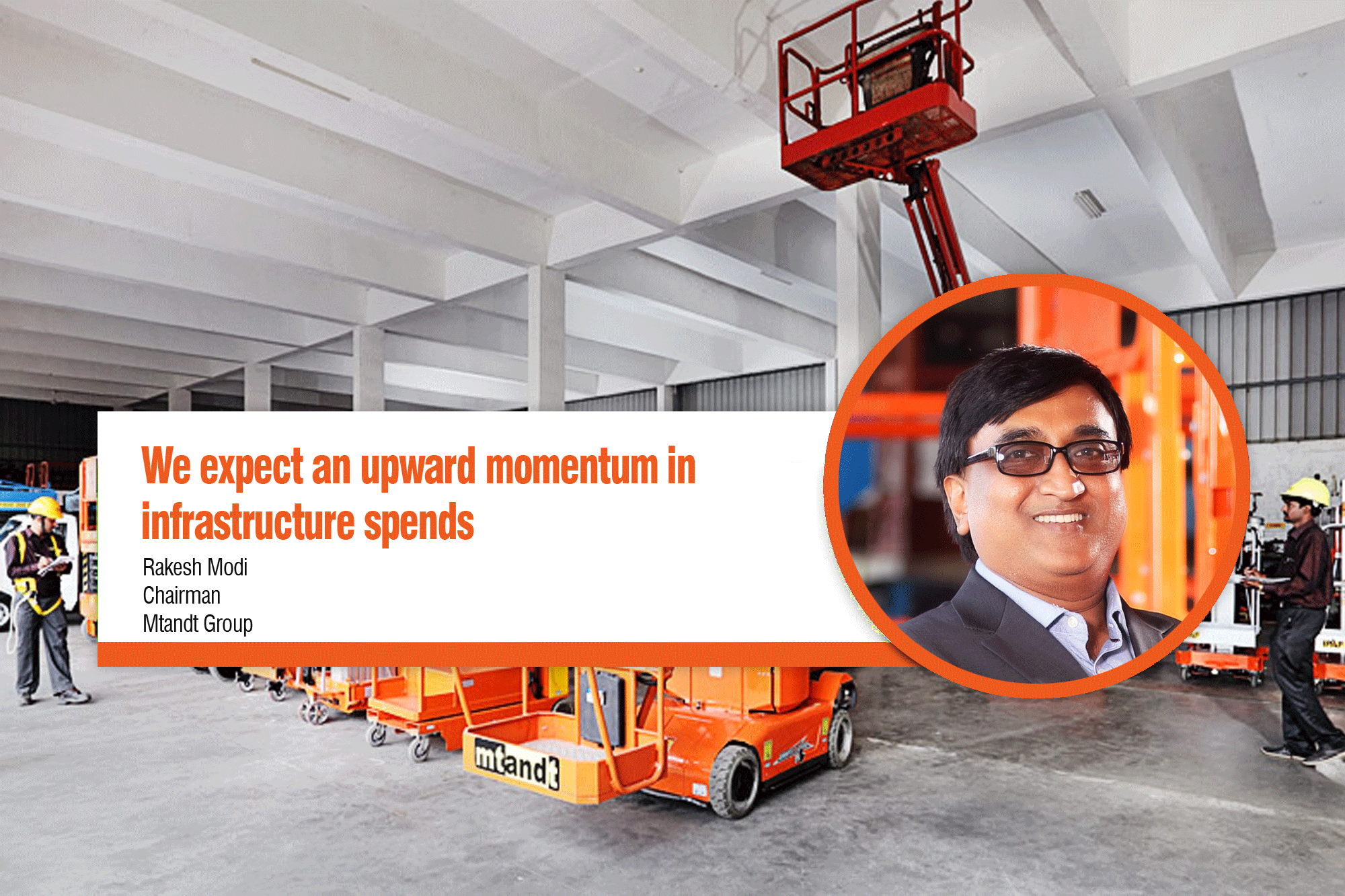Integrated, separate, safe control technology on smaller machinery by Schmersal
By Edit Team | April 22, 2022 7:59 am SHARE

Integrated solutions promise robust coordination of functions and a simple infrastructure with reduced hardware effort.
Safety controllers are becoming increasingly popular as an alternative to relay modules, even on smaller machinery. The designer can opt for one of two concepts: some designers favour integration of safety into the automation PLC, but a separate (small) safety controller offers clear benefits.
Should machine safety be built into the PLC or implemented separately with its own hardware and software? This should be the concern of every machinery designer today.
Replacing relay modules
The question is especially important in the case of smaller machinery with a manageable number of safety functions and switchgear devices. There is a noticeable trend favouring replacing multiple safety relay modules with one small safety controller or with a PLC with integrated safety functions.
There is good reasoning behind this trend. In the first instance, machinery is becoming increasingly complex. It features additional and differentiated safety functions, in some cases offering interaction with the operator. Examples include setup with touch mode or troubleshooting. This does however, presuppose that these options can be mapped and monitored in a safety focused control system. Additionally, the requirements for the safety of machinery are becoming increasingly stringent, partly due to growing awareness of hazards and partly due to the increasing differentiation of general and machinery-specific standards.
Productivity and availability are
Equally important is the fact that differentiated, needs based implementation of safety requirements can also enhance user operability and machinery productivity. With a safety-focused control system, machinery builders can create the prerequisite for bringing only part of a machine to a halt in the event of irregularities. Additionally, safety functions can be linked together, which can also lead to increased productivity and the avoidance of unscheduled downtime. The enhanced diagnosis options, when compared to safety relay modules, enable more rapid localisation of fault causes in the event of malfunctions.
With traditional relay modules, the effort required for wiring, documentation, and validation of the module solution becomes disproportionately large when the safety functions reach a certain complexity. With safety control systems, the wiring effort is reduced. Moreover, the configuration is also simpler and enables better adaptation to the individual application as it can be realised in wide-ranging areas through parametrisation and programming.
Integrated or separate?
To return to the original question: should the machinery builder accomplish these benefits with an integrated or separate solution for the safety of machinery?
At first glance, there is more than one argument in favour of integration – the fact, for example, that modern PLCs cover the safety of machinery tasks and that users can save on costs as well as space in the control cabinet. In addition, it is for a good reason that integration has become a popular concept in automation and digitisation.
In theory at least, integrated solutions promise robust coordination of functions and a simple infrastructure with reduced hardware effort.
In practice, there are clear benefits to a separate solution. One of the positives of standalone safety infrastructure is the fact that a safety concept can be accomplished independently of the automation solution and, therefore, independently of the manufacturer of the functional control system the machinery builder may specify that. Consequently, even when customer specific automation PLCs are used, a standardised safety concept can be accomplished on an identical component and hardware basis.
Another benefit is that you do not need to be a PLC specialist to programme the safety functions; the range of language is manageable when compared to automation control systems.
Integration option
Opting for separate safety does not mean that integration is impossible. Quite the opposite, in fact. Bus protocols enable integration into higher-level control systems, something that might be required when production systems comprising multiple subsystems from different providers must be integrated. In that case, the safety solutions of the individual systems have to be connected in order to implement a higher-level emergency-stop function, for example.
 If the higher-level safety concept is based on a safety integrated solution, machinery and subsystems that operate in standalone mode can only be operated in a rudimental manner. On the other hand, a compact safety controller like the Protect PSC1 from Schmersal offers a simple and flexible option by means of integrated safety protocols (Profisafe and FSoE) to operate such machinery encapsulated and, if required, to integrate them into fail-safe fieldbus architectures without having to make changes to the safety application.
If the higher-level safety concept is based on a safety integrated solution, machinery and subsystems that operate in standalone mode can only be operated in a rudimental manner. On the other hand, a compact safety controller like the Protect PSC1 from Schmersal offers a simple and flexible option by means of integrated safety protocols (Profisafe and FSoE) to operate such machinery encapsulated and, if required, to integrate them into fail-safe fieldbus architectures without having to make changes to the safety application.
Compact and complete
Manufacturers of smaller machines, in particular, increasingly have to deal with safety that is requirements that are more stringent. In addition, the expectations of end customers in terms of diagnosis options and ease of maintenance are also on the increase in this segment. This requirements profile can be mapped easily and cost effectively with a small safety controller. Depending on the application, standard automation can also be realised with the small controller, and integration can be achieved “in the opposite direction.”
The Schmersal Group offers two options to help achieve a safety-separated concept on smaller machinery. The Protect Select small safety controller has been specially developed for this very application. The user does not have to programme the controller but can choose from pre-configured programmes and only has to enter the corresponding parameters. These applications cover a wide range of possible use cases. Additionally, the user can also activate special features such as free allocation of feedback circuits (EDM), start-up tests, cyclical testing, and auto-start with every program. Additional functions and operating modes (setup mode, process monitoring) can also be accomplished.
Modular compact safety controller
If a higher level of customisation and adaptability is required, the Protect PSC1 safety PLC could be an option. Thanks to its modular design, it is easy to adapt to user requirements, irrespective of whether the signals from emergency-stop control devices, electromechanical safety switchgear, tactile protective devices, safety sensors or optical protective devices need to be evaluated. A number of modules are available for fail-safe drive monitoring, which reliably monitor parameters including position, speed and increment.
Additionally, the controller can also be supplemented with a universal communication interface, where the user simply selects and sets various bus protocols such as Profinet, Ethercat, Ethernet/IP, Profibus or CANopen using software. The interface also allows safety remote I/O communication and the simultaneous connection of up to four systems via safety cross communication via Ethernet. An OPC UA server can also be integrated. In summary, a safety separated safety concept can offer significant benefits in terms of standardisation, operating convenience and flexibility.
Cookie Consent
We use cookies to personalize your experience. By continuing to visit this website you agree to our Terms & Conditions, Privacy Policy and Cookie Policy.




































-20240213125207.png)

























